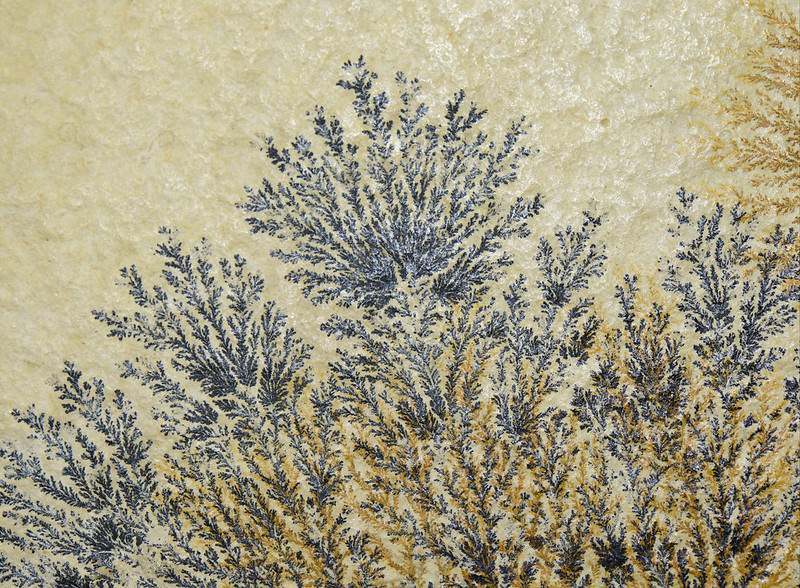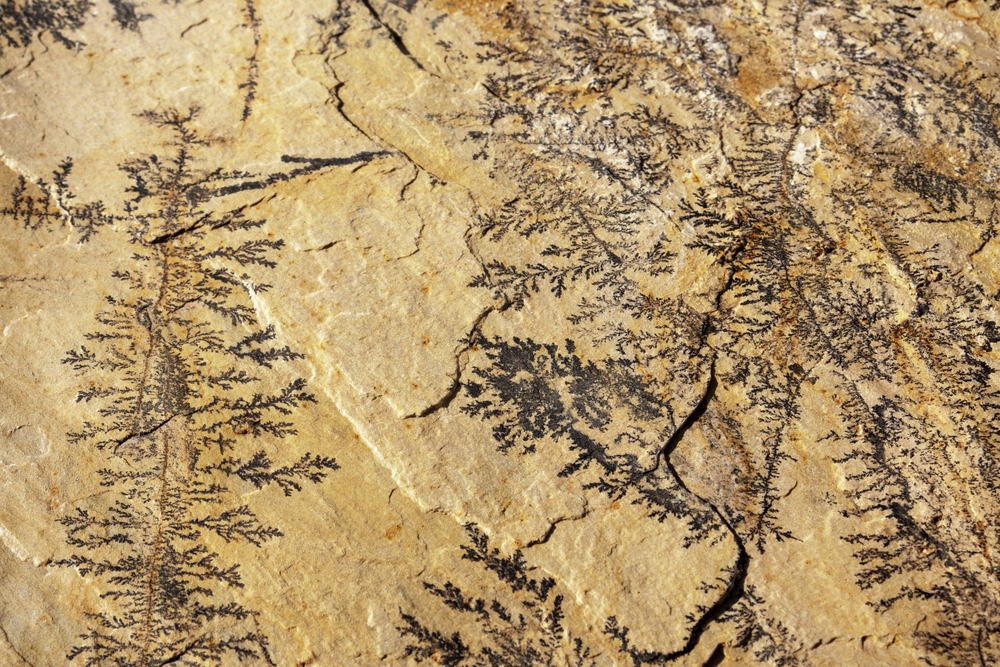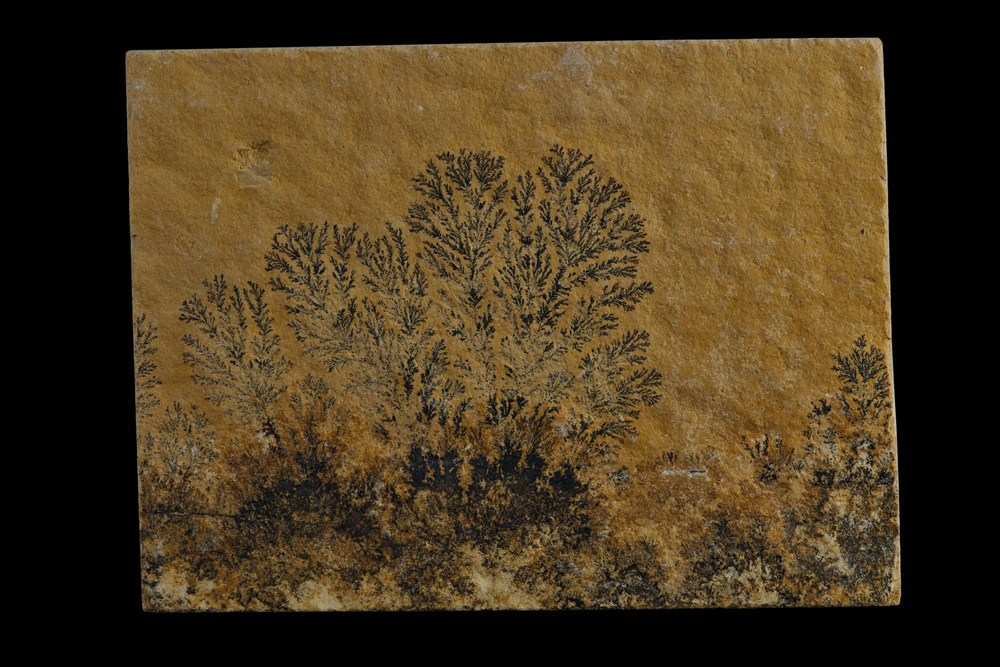Manganese Dendrites

These formations are not true minerals but rather are composed of manganese oxides, typically appearing as branching or tree-like patterns on rock surfaces. The manganese is deposited from water solutions, and these formations often resemble fossils or plant matter, but they are purely inorganic. They typically form in cracks and fissures within rocks as the solutions precipitate out manganese along with iron compounds, leading to intricate, fern-like patterns.
The color of these dendritic patterns ranges from black to brown, contrasting sharply with the lighter-colored host rocks, such as limestone or sandstone, which makes them visually striking and often used as ornamental stones or in jewelry. These natural artworks are commonly mistaken for fossilized remains due to their organic appearance.

Classification: Mineraloid
Chemical Composition: Primarily manganese oxides, often with some iron oxides
Color: Black or dark brown, resembling the appearance of fern-like patterns
Streak: Brownish-black
Hardness: Dependent on the host rock; manganese oxides themselves are relatively soft
Cleavage: None
Fracture: Depends on the substrate material
Luster: Dull to earthy
Transparency: Opaque
Crystal System: Non-crystalline; dendritic patterns form through a natural chemical process
Formation and Geology: Manganese dendrites are not true minerals but rather mineraloid growths or inclusions that form in fractures or within the porous spaces of host rocks. These dendritic patterns are created by manganese and sometimes iron ions precipitating out of groundwater, seeping through rocks like limestone, sandstone, and other sedimentary rocks. The dendritic, or tree-branch-like, patterns occur due to the metal ions precipitating onto the rock surfaces in a fractal-like branching pattern.
Physical Properties: Manganese dendrites are recognized for their striking and detailed patterns that resemble plants or trees. These patterns are purely mineral deposits and do not include any organic material. The color and form of dendrites can often lead to them being mistaken for fossils.

Identification Tips
- Visual Inspection: Look for characteristic black, fern-like patterns on rock surfaces.
- Pattern and Form: Unlike true plant fossils, dendrites do not show any organic tissue or cellular structure when viewed under magnification.
- Host Rock: Commonly found in cleavages or on the surfaces of lighter-colored sedimentary rocks, providing a stark contrast.
Locations: Found worldwide, commonly in sedimentary rock formations that are exposed to groundwater rich in manganese and iron.
Uses and Significance: While primarily of interest to collectors for their aesthetic and natural art-like appearance, manganese dendrites do not have significant commercial uses. They are often used in jewelry and ornamental stone settings to showcase their natural beauty and intriguing patterns.

